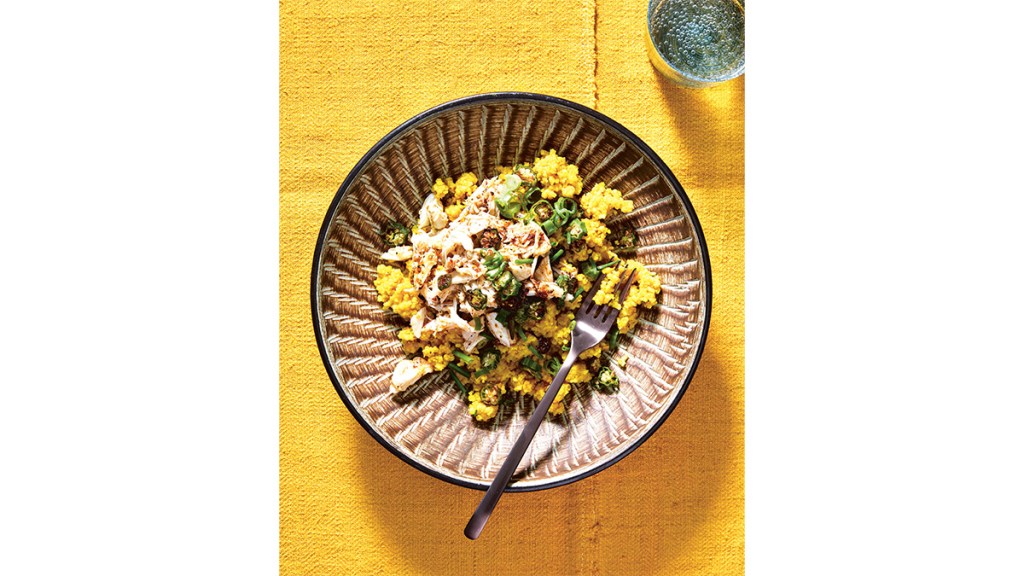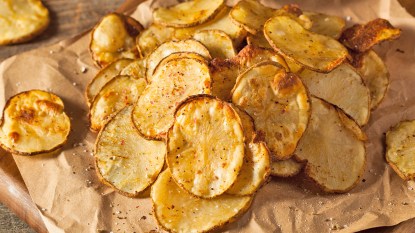Comfort Foods Can Actually Be Healthy — Tasty Ingredient Swaps Are the Secret, According to Nutritionist
Get tips for making family faves good for you!

You might think that maintaining a balanced diet means limiting comfort foods. Indeed, foods like flaky biscuits and corn chowder are laden with butter and heavy cream. However, there are ways to make family favorite meals minus the unhealthy ingredients. It’s merely a matter of finding the right substitutions.
If you’re wondering how to swap traditional ingredients for health-boosting alternatives without losing the flavor you love, you’re not alone, which is why we consulted with Maya Feller, MS, RD, CDN, a registered dietitian nutritionist and author of Eating from Our Roots. Feller’s specialty is putting a healthy spin on classic comfort food dishes (so they can be enjoyed without the guilt). Below, she shares nutritional insights and advice that will help you health-ify your family’s favorite recipes.
How To Make Healthy Comfort Food
Feller’s food expertise fuels her desire to make healthy eating less restrictive. Rather than making drastic changes to your eating habits, she recommends using lifelong comfort foods as a starting point for introducing new and healthy ingredients to your diet. Using her new book Eating from Our Roots (Buy from Amazon, $25.99) as a guide, we asked her some questions. Here’s what she had to say.
FFW: What value does this book provide for cooks wanting to prepare healthy meals that resemble their childhood dishes?
I’ve always been interested in the intersection of food, nutrition, culture, and history. As a dietitian trained in the US, I was exposed to American nutrition and health recommendations. So, while my patients have always had diverse cultural identities, I was clinically trained from one cultural perspective. Over the years, my patients taught me about their foodways. Cooking is something that people from all over the world do every day, and there’s always a delicious heritage dish that’s reminiscent of home. So, I chose to highlight flavorful and nourishing foods that invite people into their kitchens and encourage them to keep cooking. Ultimately, this allows people to prioritize culturally-relevant forms of sustenance that are nutrient-dense in their daily diet.
What are your tips for finding nutritious ingredient swaps that don’t compromise on flavor?
I generally tell people that swaps can be used when there’s a health-related reason for that substitute. Let’s say someone needs to think about managing their blood pressure and wants to reduce their salt consumption. Herbs and spices alongside acidic flavors like lemon juice or apple cider vinegar lower sodium intake while enhancing the dish’s flavor. In the book, I use some lesser-known ingredients and spices that impart incredible flavor including vadouvan curry seasoning and dried Aleppo pepper.
Vadouvan curry seasoning (Buy from iHerb.com, $4.99) contains a blend of ground turmeric, coriander, and cumin — giving dishes a savory and aromatic flavor. Dried Aleppo pepper (Buy from Amazon. $6.99), named after the city Aleppo in Syria, are crushed flakes made from the Halaby pepper. This spice imparts a sweet and salty taste in recipes, followed by a moderately spicy kick.
Additionally, using lesser known starches and vegetables is another way to expand the palate. If a dish calls for potatoes, use nutrient-rich starches like cassava root or plantain instead as they’re just as yummy. Get creative when finding mouthwatering ingredient swaps that provide nutritional value and flavor to your family meals!

A Mouthwatering Comfort Dish Worth Trying
Rice dishes are filling comfort foods, and this Chili Coconut Crab Rice recipe from Feller’s book is inspired by West and Central African flavors. “Coconuts are reminiscent of coastal Africa and okra is a staple vegetable as well, both boasting an array of health-supporting nutrients [including protein and fiber],” Feller writes in the book. “The use of vadouvan curry imparts warm, sweet, and smoky notes all at once — while the crab brings the brine of the ocean. All of the components make for a nourishing and tummy-warming dish.”
Ingredients:
- 1 cup rice grits
- 2 tablespoons vadouvan curry spice blend
- Kosher salt
- 3 tablespoons unsalted butter
- 1 pound unpasteurized jumbo lump crab meat
- 4 tablespoons dried Aleppo pepper, divided
- ½ cup coconut oil
- 1 cup avocado oil, divided
- 3 tablespoons sesame seeds
- 20 pieces thinly sliced okra
- 2 scallions, whites and greens, thinly sliced, for garnish
- 2 tablespoons minced chives, for garnish
- ⅛ teaspoon freshly ground black pepper
Directions:
Servings: 6
- Rice grits: Rinse rice grits until starch runs through, then place in medium pot and cover with water by at least 1 inch. Bring to boil then reduce heat to simmer, cover with lid, and cook 14 to 15 minutes. Remove lid and cook uncovered additional 3 minutes, or until water is fully absorbed. Season with vadouvan spice and salt to taste. Remove from heat, cover, and set aside.
- Crab: In a small pot, melt butter with ¼ cup water, constantly whisking to emulsify. Add crab to pot and warm through until hot.
- Chili oil: In a blender, place 3 tablespoons of Aleppo pepper, coconut oil, and ¾ cup avocado oil. Blend 60 seconds, or until fully incorporated. Add remaining Aleppo pepper and sesame seeds. Blend additional 30 seconds; set aside.
- Okra: Place sliced okra in medium, heavy-bottomed skillet. Add remaining ¼ cup avocado oil and fry over high heat, stirring continuously, until crispy (approximately 15 minutes). Be careful to avoid burning okra. Set aside on towel-lined plate to absorb excess oil.
- To serve: Place rice grits on bottom of each bowl, and gently spoon crab over top. Garnish with scallions and chives. Stir chili oil and use to lightly dress crab. Place okra atop crab. Season with salt and pepper to taste.

Recipe from EATING FROM OUR ROOTS. Copyright © 2023 by Maya Feller. Published by goop Press/Rodale Books, an imprint of Penguin Random House, LLC. Reprinted with permission.













